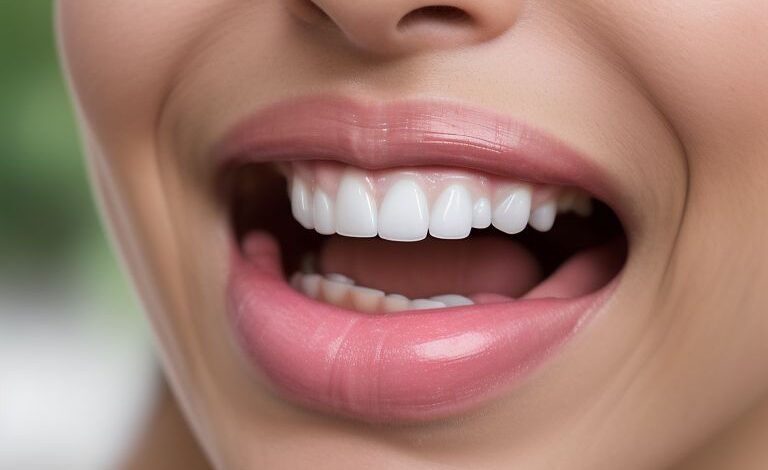What Color Gums Are Healthy? A Comprehensive Guide to Gum Health

What Color Gums Are Healthy? A Comprehensive Guide to Gum Health
When it comes to oral health, many people focus on their teeth while neglecting the often-overlooked area of gums. However, the color and condition of your gums can reveal a lot about your overall health. In this guide, we'll explore what color gums are considered healthy, the significance of gum color changes, and how to maintain vibrant gum health. Whether you're looking to improve your oral hygiene routine or just curious about your gum color, you’ve come to the right place!
Understanding Gum Color
Healthy gums typically exhibit a light pink hue. This color indicates good circulation and a lack of inflammation. However, not everyone’s gums are the same, and various factors can affect gum color. Let’s delve deeper into what constitutes healthy gums and how to recognize when something might be wrong.

Healthy Gums: The Perfect Pink
- Color: A healthy gum color ranges from light to medium pink. This shade signifies that your gums are well-nourished and not inflamed.
- Texture: Healthy gums should have a firm, stippled texture. This means they’re tight against the teeth, which helps protect the bone and tissues underneath.
- No Bleeding: When you brush or floss, healthy gums do not bleed. If you notice blood, it might be a sign of gum disease.
Common Gum Colors and What They Mean
Gum color can be affected by various factors, including genetics, lifestyle, and health conditions. Here’s a rundown of common gum colors and what they might indicate:
- Pale Pink: This could indicate anemia or poor blood circulation. If your gums are consistently pale, consider consulting a healthcare professional.
- Dark Pink: While this may seem like a sign of healthy gums, it can also indicate inflammation or gingivitis, especially if the gums are swollen.
- Red or Swollen: Red, swollen gums are often a sign of gum disease. This condition is typically reversible with proper care, but it’s crucial to address it quickly to prevent further complications.
- White or Spotty: White patches may indicate oral thrush or leukoplakia, conditions that require medical attention.
- Purple or Dark Gums: These can signify a lack of oxygen or even certain systemic diseases. If you notice this change, consult a dentist or doctor.
- Brown or Black: These colors can be the result of certain medications, tobacco use, or even hyperpigmentation. Discuss any concerns with your healthcare provider.
The Importance of Gum Health
Maintaining healthy gums is crucial for more than just oral health; it can also impact your overall health. Poor gum health has been linked to a variety of systemic diseases, including:
- Heart Disease: Studies have shown a connection between gum disease and heart health. Bacteria from inflamed gums can enter the bloodstream and contribute to arterial plaque.
- Diabetes: Gum disease can make it harder to control blood sugar levels, creating a vicious cycle of health problems.
- Respiratory Issues: Inhaling bacteria from the mouth can lead to lung infections and other respiratory problems.
- Pregnancy Complications: Pregnant women with gum disease may be at a higher risk for premature births and low birth weight.
Signs of Gum Disease
Recognizing the early signs of gum disease is essential for timely intervention. Here are some common symptoms to watch for:
- Red or swollen gums
- Persistent bad breath
- Receding gums
- Loose teeth
- Painful chewing
If you experience any of these symptoms, it’s crucial to seek dental advice promptly.
How to Maintain Healthy Gums
Now that you understand the significance of gum health, let’s explore some practical tips for maintaining healthy gums.
1. Practice Good Oral Hygiene
The foundation of gum health lies in consistent and effective oral hygiene practices:
- Brush Twice Daily: Use a soft-bristled toothbrush and fluoride toothpaste. Brush for at least two minutes each time, focusing on the gum line.
- Floss Daily: Flossing helps remove plaque and food particles that a toothbrush may miss, especially between the teeth and below the gum line.
- Use Mouthwash: An antimicrobial mouthwash can help reduce plaque and kill bacteria, contributing to gum health.
2. Regular Dental Check-Ups
Schedule regular visits to your dentist for cleanings and check-ups. Professional cleanings can remove tartar buildup and help detect early signs of gum disease.
3. Eat a Balanced Diet
A diet rich in vitamins and minerals can promote gum health. Here are some dietary tips:
- Vitamin C: This vitamin is essential for collagen production and can help prevent gum disease. Citrus fruits, strawberries, and bell peppers are excellent sources.
- Calcium: Necessary for strong bones and teeth, calcium-rich foods like dairy, leafy greens, and fortified plant milks are crucial for gum health.
- Omega-3 Fatty Acids: Found in fish like salmon and walnuts, these fats can help reduce inflammation in the body, including the gums.
4. Avoid Tobacco Products
Smoking and using tobacco products can significantly increase the risk of gum disease and other oral health issues. Quitting can improve gum health and overall well-being.
5. Stay Hydrated
Drinking plenty of water helps wash away food particles and bacteria, reducing the risk of gum disease. Aim for at least eight glasses of water a day.
Natural Remedies for Healthy Gums
In addition to traditional oral hygiene practices, several natural remedies may help maintain gum health. However, these should complement, not replace, professional dental care.
1. Saltwater Rinse
A simple saltwater rinse can help reduce inflammation and promote healing. Mix one teaspoon of salt in a cup of warm water and swish it around your mouth for 30 seconds before spitting it out.
2. Aloe Vera
Aloe vera has anti-inflammatory and antibacterial properties. Applying aloe vera gel directly to the gums can help soothe irritation and promote healing.
3. Clove Oil
Clove oil has long been used for dental health due to its analgesic and antiseptic properties. Dilute a few drops of clove oil in a carrier oil and apply it to your gums for relief from pain and inflammation.
4. Green Tea
Rich in antioxidants, green tea can help reduce gum inflammation and promote overall oral health. Try to incorporate it into your daily routine for the best results.
5. Turmeric
Turmeric contains curcumin, a compound known for its anti-inflammatory properties. Making a paste of turmeric and water and applying it to the gums may help reduce inflammation and promote healing.
The Connection Between Systemic Health and Gum Health
As mentioned earlier, gum health is closely linked to overall health. Understanding this connection can motivate you to prioritize your oral care. Here are a few systemic conditions that are particularly connected to gum health:
Heart Disease
The bacteria responsible for gum disease can enter the bloodstream and affect your heart. Inflammation from gum disease may also contribute to heart problems. Maintaining healthy gums can be a preventive measure against cardiovascular issues.
Diabetes
Diabetes can lead to higher blood sugar levels, which can exacerbate gum disease. Conversely, gum disease can make it more challenging to manage diabetes. If you have diabetes, regular dental check-ups and good oral hygiene are even more critical.
Osteoporosis
This condition weakens bones and can lead to tooth loss. Healthy gums are essential for maintaining the bone structure that supports your teeth. If you have osteoporosis, discuss with your dentist about monitoring your gum health closely.
How to Check Your Gum Health
You don’t need to wait for a dental appointment to monitor your gum health. Here are some simple steps you can take at home:
1. Visual Inspection
Stand in front of a mirror and examine your gums. They should be a consistent light pink color with no swelling or redness.
2. Check for Bleeding
Gently brush and floss your teeth, observing if there’s any bleeding. If you notice bleeding, it’s a sign you should see your dentist.
3. Gum Pocket Depth
You can check your gum pockets at home by gently probing between your gums and teeth with a clean finger. Healthy gums will have shallow pockets (1-3 mm), while deeper pockets can indicate gum disease.
When to See a Dentist
While regular check-ups are vital, you should seek dental care if you notice any of the following:
- Persistent bad breath that doesn’t improve with hygiene
- Gums that bleed during brushing or flossing
- Swollen or painful gums
- Teeth that feel loose or shift position
Understanding what color gums are healthy is crucial for maintaining your oral health. A bright pink hue is generally a good sign, while any significant changes in color or condition warrant a closer look. By following proper oral hygiene practices, eating a balanced diet, and consulting with your dentist regularly, you can promote healthy gums and, consequently, a healthier you.
Maintaining gum health is not just about aesthetics; it’s a vital aspect of your overall health and well-being. By being proactive and informed, you can keep your gums—and your body—in excellent condition. Remember, healthy gums equal a healthy smile!


